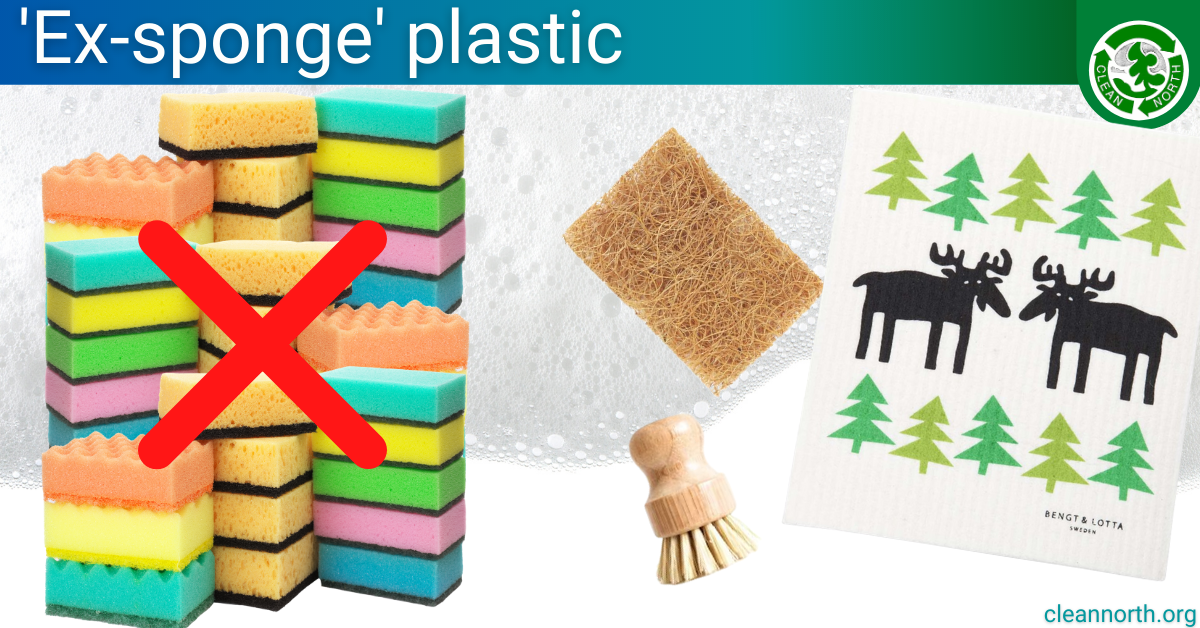
Every plastic sponge and scrubber you and billions of other have ever bought still exists today — if not whole in a landfill, then as tiny plastic bits in in our water, food, and wildlife. If you’d like to kick the plastic sponge habit, consider swedish dishcloths, which are made of cotton and cellulose and are compostable. In addition to being a great sponge alternative, these dishcloths replace paper towels for many tasks such as cleaning windows. They are very absorbent, able to mop up 20 times their weight in liquid, and dry faster than a regular sponge, reducing their germy-ness. They are also easy to clean — just toss in your washer. You can reuse them up to 50 times!
Oh…and one more thing…swedish dishcloths are super cute. They come in all kinds of fun patterns — moose, trees, ladybugs, blueberries, flowers, and more.
Synthetic sponges are popular because they do work well to mop up water and crumbs. They give an illusion of clean. But they are almost impossible to keep germ-free. All those nooks and crannies provide perfect habitat for bacteria. In fact, research shows the kitchen sponge is one of the germiest things in the house—even germier than the toilet. And again, there’s the problem of their being plastic and that plastic persisting in the environment.
One down side of swedish dishcloths is they do not have that handy scrubber layer. Two alternatives to plastic scrubbers are walnut or coconut fibre scrubbers (which last for months!) and wood/natural bristle scrubbing brushes.
If you have any ideas for green cleaning, feel free to share them with us via our social media channels (@cleannorthsault) or info@cleannorth.org.




